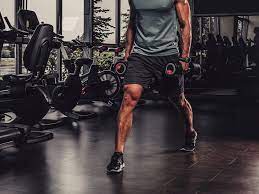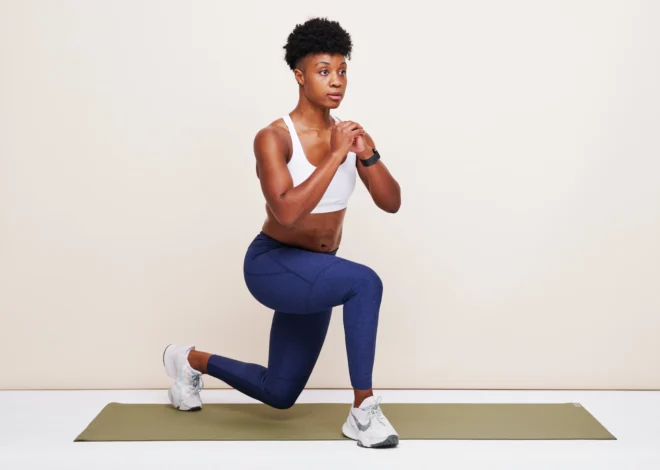
9 Simple Leg Workouts at Home for Toned Legs!
Introduction
Starting with a compelling introduction is essential to engaging readers and setting the context. This section briefly discusses how leg workouts at home are a highly effective way to stay fit without needing expensive gym memberships or equipment. These exercises allow individuals to strengthen and tone their legs using their own body weight, making them convenient and accessible for anyone, regardless of fitness level. Highlight that these simple exercises can target significant leg muscles and are ideal for people looking to enhance leg definition and strength at home.
1. Benefits of Leg Workouts at Home
Exploring the advantages of home leg workouts motivates readers and emphasizes why at-home routines are valuable. Some key benefits to mention include:
– Convenience: At-home leg workouts eliminate the need to commute to a gym, saving time and making it easier to fit workouts into a busy schedule.
– Accessibility: These workouts require no special equipment, making them accessible to everyone, even those with limited space or resources.
– Privacy: Exercising at home provides a comfortable environment, especially for beginners who may feel self-conscious at the gym.
Additionally, regular leg workouts at home can improve overall physical fitness. Strong leg muscles support essential daily activities, reduce the risk of injuries, and enhance balance and coordination. Emphasize that a toned lower body is achievable with a consistent, well-rounded leg routine, contributing to an overall fitter, healthier lifestyle.
2. Warm-Up Exercises Before Starting Leg Workouts
A warm-up is crucial to preparing the muscles, improving flexibility, and reducing the risk of injury during the main workout. Warming up also increases muscle blood flow, allowing for better performance and more effective toning.
Suggested warm-up exercises:
Leg Swings: Stand on one leg, holding onto a wall or sturdy surface for balance, and swing the opposite leg forward and backwards. This movement loosens the hip joints and prepares the legs for dynamic movements.
High Knees: Stand with feet hip-width apart and alternately lift each knee towards the chest, simulating a running motion in place. High knees are excellent for engaging the leg muscles and raising the heart rate.
Jumping Jacks: This classic exercise increases the heart rate, warms up the entire body, and prepares the leg muscles for various movements.
A proper warm-up routine should last 3-5 minutes to ensure muscles are ready for the workout.
9 Simple Leg Workouts for Toned Legs
3. Bodyweight Squats
How to Perform Bodyweight Squats for Stronger Legs
Bodyweight squats are one of the most effective exercises for toning and strengthening the legs. They target the quadriceps, hamstrings, and glutes, essential for building a balanced lower body.
Correct Technique for Bodyweight Squats:
1. Starting Position: Stand with feet shoulder-width apart and toes slightly turned out.
2. Engage Core: Keep your chest up and shoulders relaxed, and engage your core muscles.
3. Lowering Motion: Bend at the hips and knees as if sitting back into an invisible chair, keeping the knees aligned with the toes.
4. Depth: Lower yourself until your thighs are parallel to the floor or as low as comfortable, without straining.
5. Rising Motion: Push through your heels to return to the starting position, straightening your legs.
Benefits of Bodyweight Squats:
– Toning and Shaping: Squats help ton the legs by targeting multiple muscle groups, enhancing the overall shape and strength of the legs.
– Balance and Stability: This exercise improves balance by working on stabilizer muscles.
– Functional Strength: Squats mimic everyday movements, making it easier to perform daily activities with more ease.
Encourage readers to perform 2-3 sets of 10-15 repetitions to feel the full benefits of squats. As they progress, they can add more repetitions or slow down the Motion to increase the challenge.

4. Lunges
Lunges – A Powerful Leg Workout for Balance and Tone
Lunges are an excellent exercise for improving balance, building leg muscle strength, and toning the lower body. They primarily target the quadriceps, hamstrings, and glutes, making them an essential move for a balanced leg workout.
Steps for Performing a Basic Lunge:
1. Stand upright with feet hip-width apart.
2. Take a big step forward with your right leg, lowering your hips until both knees are at a 90-degree angle.
3. Ensure your front knee is directly above your ankle and your back knee hovers slightly above the floor.
4. Push back to the starting position using your front heel.
5. Repeat on the other side.
Variations of Lunges:
– Walking Lunges: Step forward with each lunge, alternating legs as you “walk” forward.
– Reverse Lunges: Step backwards instead of forward, which can help reduce knee strain.
– Side Lunges: Step to the side, shifting your weight and targeting inner thigh muscles.
Lunges are versatile and can be adjusted to suit various fitness levels, making them a staple for at-home leg workouts.
5. Glute Bridge
Glute Bridges to Tone Legs and Strengthen Glutes
Glute bridges are an effective exercise for toning the glutes and hamstrings. This move helps improve core stability and posture. It mainly benefits those looking to strengthen the lower back and glutes.
How to Perform Glute Bridges:
1. Lie on your back with your knees bent, feet flat on the floor, and arms at your sides.
2. Engage your core and squeeze your glutes as you lift your hips toward the ceiling.
3. Lift until your body forms a straight line from shoulders to knees.
4. Hold for a few seconds at the top, then slowly lower your hips back down.
5. Repeat for 10-15 repetitions.
Impact of Glute Bridges:
– Glute bridges help strengthen the glutes and aid in toning the thighs and stabilizing the core muscles. This exercise can improve posture and alleviate lower back pain by strengthening the lower body.
6. Step-Ups
Step-Ups – Effective Leg Workouts Using Your Home Steps
Step-ups are functional, low-impact exercises that primarily target the quads, hamstrings, and glutes. They’re great for building leg strength and improving balance, and they can be done on any sturdy surface, like a step or low bench.
How to Perform Step-Ups:
1. Stand in front of a step, staircase, or bench.
2. Place your right foot on the step, ensuring it’s fully stable.
3. Push through your right heel to lift your body onto the step, bringing your left foot up to meet your right.
4. Step back down with your left foot, followed by your right.
5. Repeat for several reps, then switch sides.
Benefits of Step-Ups:
– Step-ups are a functional exercise that mimics daily movements, making them highly practical. They build leg strength and stability, effectively enhancing coordination and toning the lower body.
7. Calf Raises
Calf Raises for Defined Lower Leg Muscles
Calf raises are an easy yet powerful exercise that targets the calf muscles. They help improve balance and enhance overall leg strength, making them valuable to any leg workout routine.
Steps for Performing Calf Raises:
1. Stand with feet hip-width apart, optionally holding onto a wall or chair for balance.
2. Slowly raise your heels as high as possible, engaging your calf muscles.
3. Pause briefly at the top, then slowly lower your heels.
4. Repeat for 15-20 repetitions.
Benefits of Calf Raises:
– Calf raises help in defining and strengthening the lower legs. They also enhance ankle stability and improve endurance for activities like walking and running.
8. Wall Sits
Wall Sits – A Simple but Intense Leg Workout
Wall sits are an isometric exercise that targets the quads, glutes, and hamstrings. They’re simple to perform but challenging to hold, making them great for building leg endurance and strength.
How to Do Wall Sits:
1. Stand with your back against a wall, feet shoulder-width apart.
2. Slide down the wall until your knees are at a 90-degree angle as if sitting on an invisible chair.
3. Keep your back flat against the wall and hold this position for 20-60 seconds.
4. Stand back up and rest before repeating.
Endurance Benefits of Wall Sits:
– Wall sits build muscular endurance, especially in the quads, and improve stability. They’re also great for engaging the core, making them beneficial for posture and balance.
9. Bulgarian Split Squats
Bulgarian Split Squats – A Challenging Leg Workout at Home
Bulgarian split squats are a single-leg exercise that enhances balance, strengthens the glutes, quads, and hamstrings, and helps improve overall lower-body stability.
How to Perform Bulgarian Split Squats:
1. Stand a couple of feet before a chair or step.
2. Extend one leg back and place the top of your foot on the chair.
3. Lower your body by bending your front knee, keeping your chest and core engaged.
4. Push through your front heel to return to the starting position.
5. Complete the set on one leg before switching.
Benefits of Bulgarian Split Squats:
– This exercise isolates each leg, helping correct muscle imbalances, and builds strength and stability in the lower body.

10. Side Lunges
Side Lunges to Target Inner and Outer Thighs
Side lunges are a variation of the traditional lunge that targets the inner and outer thigh muscles. They’re excellent for improving hip mobility, balance, and overall leg strength.
How to Perform Side Lunges:
1. Stand with feet together, hands on hips.
2. Take a comprehensive step to the right, bending your right knee and pushing your hips back as you lower yourself.
3. Keep your left leg straight, and ensure your suitable knee stays aligned with your right foot.
4. Push back up to the starting position, then repeat on the left side.
Benefits of Side Lunges:
– Side lunges engage the inner thighs and improve hip flexibility. They add variety to leg workouts and help develop a balanced lower body by working muscles often neglected in traditional exercises.
11. Standing Leg Lifts
Standing Leg Lifts for Toned Thighs and Hips
Standing leg lifts are a simple yet highly effective exercise for toning the thighs, hips, and Core. This move can help improve balance, increase hip mobility, and strengthen the muscles around the hips, including the gluteus medius (the side glutes) and outer thighs. Standing leg lifts also engage the Core for stability, making them a comprehensive lower-body exercise.
Steps for Performing Standing Leg Lifts:
1. Start Position: Stand tall with feet hip-width apart. Place your hands on your hips or hold onto a wall or chair for support.
2. Engage Core: Tighten your core muscles to maintain balance throughout the movement.
3. Lift Leg: Slowly lift your right leg out to the side, keeping your knee straight and toes pointed forward. Aim to lift as high as possible while maintaining control without leaning your torso.
4. Pause and Lower: Hold the lifted position for a second, feeling the tension in your outer thigh and hip muscles, then slowly lower your leg back to the starting position.
5. Repeat: Perform 10-15 repetitions on one side before switching to the left leg.
Variations of Standing Leg Lifts:
– Front Leg Lifts: Lift your leg forward instead of to the side, targeting the quadriceps and hip flexors.
– Back Leg Lifts: Extend your leg backwards, engaging the glutes and hamstrings for added lower body strength.
Benefits of Standing Leg Lifts:
– Tones Thighs and Hips: This exercise targets the outer thigh and hip muscles, helping create a leaner, more toned appearance.
– Improves Balance and Core Stability: The exercise’s unilateral (one-sided) nature forces the Core to work harder to stabilize the body.
– Enhances Hip Mobility: Regularly performing leg lifts can increase hip flexibility and mobility, which is beneficial for daily activities and injury prevention.

12. Cool Down and Stretching After Leg Workouts
Essential Cool Down and Stretching Exercises After Leg Workouts
Cooling down after a workout is essential to gradually lower the heart rate, reduce muscle stiffness, and prevent injury. Stretching after leg workouts can increase flexibility, improve muscle recovery, and reduce soreness. Here are some effective stretches for a post-leg workout routine.
1. Hamstring Stretch
– How to Perform: Sit on the floor with one leg extended straight and the other bent inward so the foot rests against the inner thigh of the extended leg. Reach toward your toes on the extended leg, keeping your back straight.
– Hold: Hold the stretch for 20-30 seconds, then switch legs.
– Benefits: This stretch targets the hamstrings, reducing tightness and improving flexibility in the back of the thighs.
2. Quadriceps Stretch
– How to Perform: Stand on one leg (hold onto a wall for balance if needed) and bend your opposite knee, bringing your heel toward your glutes. Grab your ankle and gently pull it closer to your glutes, keeping your knee aligned with your other knee.
– Hold: Hold for 20-30 seconds on each leg.
– Benefits: This stretch lengthens the quadriceps muscles, which often become tight after leg workouts.
3. Calf Stretch
– How to Perform: Stand facing a wall with one foot forward and the other extended back. Press your back heel into the floor, keeping your back leg straight and bending the front knee slightly.
– Hold: Hold for 20-30 seconds, then switch sides.
– Benefits: This stretch targets the calf muscles, relieving tightness and improving ankle flexibility.
4. Hip Flexor Stretch
– How to Perform: Kneel on one knee with the other foot in front, forming a 90-degree angle with both legs. Push your hips forward slightly, feeling the stretch in the front of the hip of the kneeling leg.
– Hold: Hold for 20-30 seconds, then switch legs.
– Benefits: This stretch releases tension in the hip flexors, which can become tight from leg exercises or prolonged sitting.
5. Glute Stretch (Figure Four)
– How to Perform: Lie on your back with knees bent. Cross your right ankle over your left knee, forming a “figure four.” Grab behind your left thigh and gently pull it toward you until you feel a stretch in the right glute.
– Hold: Hold for 20-30 seconds, then switch sides.
– Benefits: This stretch targets the glutes and outer hips, relieving tightness and enhancing hip flexibility.
6. Inner Thigh Stretch
– How to Perform: Sit on the floor with the soles of your feet together, allowing your knees to drop outward. Gently press down on your knees with your elbows to deepen the stretch.
– Hold: Hold for 20-30 seconds.
– Benefits: This stretch targets the inner thighs, improving flexibility and relaxing the muscles.
Incorporating these stretches as part of your cool-down routine helps reduce muscle soreness, enhances flexibility, and accelerates muscle recovery after leg workouts. This practice can make future workouts more effective and help you maintain optimal lower-body health.
FAQ
How often should I do leg workouts at home?
Aim for 2-3 times a week to allow muscle recovery.
Can I tone my legs without weights?
Yes, bodyweight exercises are effective for toning.
How long should each leg workout session last?
15-20 minutes is enough for beginners; increase as you progress.
Will leg workouts make my legs bulky?
Bodyweight exercises will tone, not bulk, your legs.
Can I do leg workouts every day?
It’s best to give muscles a day of rest for recovery.
What if I feel sore after leg workouts?
Rest, hydrate, and do light stretching; soreness is normal initially.
Do I need to warm up before leg workouts?
Yes, warming up prevents injuries and prepares muscles.
How can I make leg workouts more challenging?
Increase repetitions or add resistance bands.
Are leg workouts effective for weight loss?
They burn calories and build lean muscle, aiding in weight loss.
What if I don’t see results immediately?
Be patient and consistent; it may take a few weeks to notice changes.
For more details [visit here]
Video [visit here]








